Have you ever wondered, is baking powder gluten free? Keep reading to find the answer to this question, to find out which brands of baking powder are gluten free, and how to make your own gluten free baking powder.
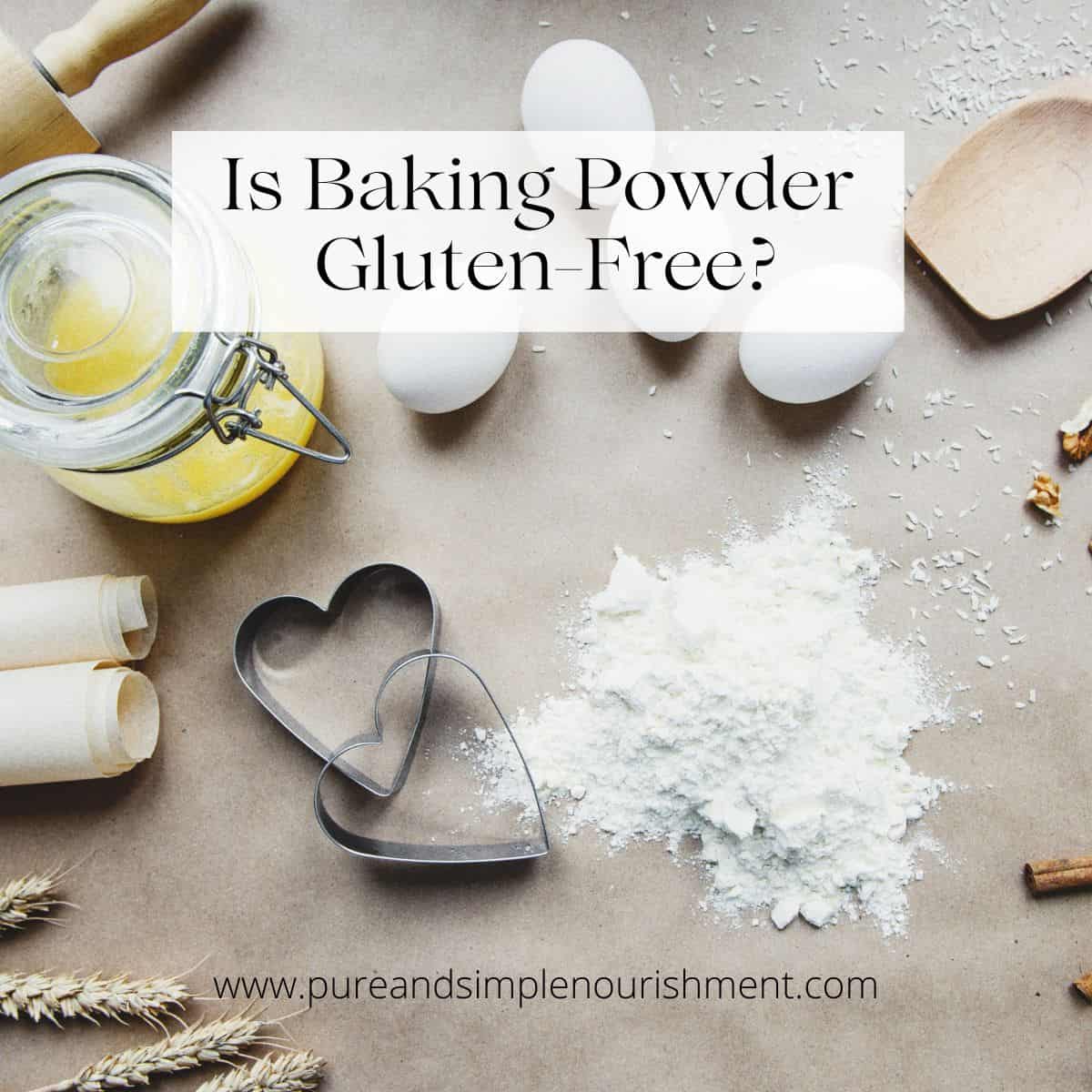
Disclaimer: Some of the links in this post are affiliate links whereby if you purchase the product through that link I make a small commission. This does not cost you anything extra and allows me to keep this website running.
Table of Contents
- Why avoid gluten?
- What is baking powder?
- How baking powder works:
- Ingredients in baking powder:
- How gluten can be in baking powder:
- The different types of baking powder:
- Gluten-free baking powder brands:
- How to make gluten-free baking powder:
- Baking powder vs baking soda:
- Is baking powder grain free?
- The bottom line: is baking powder gluten free?
- Frequently asked questions:
- Other information you will want to read:
Why avoid gluten?
For health reasons some people need to avoid eating gluten. For example, people with celiac disease or gluten intolerance (also known as non-celiac gluten sensitivity) have eat a gluten-free diet.
What is baking powder?
Baking powder is a dry, chemical leavening agent that is used to help baked goods rise when they bake. Without the use of leaveners, baked goods would come out flat, hard and less fluffy. In other words, they wouldn't be as delicious.
How baking powder works:
Baking powder releases carbon dioxide into your dough or batter, which creates tiny bubbles that help the dough rise as it bakes. It is these bubbles that give muffins, bread, cakes, and other baked goods their light and fluffy texture.
Ingredients in baking powder:
Baking powder is usually made from a combination of an acidic ingredient (often cream of tartar) baking soda, and a starch to absorb moisture. The starch found in baking powder is usually either potato starch or cornstarch, both of which are gluten-free. Thus, most baking powders are gluten-free. However, this hasn’t always been the case, and if you are gluten-free, there are a few things you need to watch for when buying baking powder.
How gluten can be in baking powder:
As mentioned, most baking powder formulations are gluten-free, but there are some exceptions which you will want to be aware of.
In North America including Canada and the United States, the most common starches added to baking powder are cornstarch and potato starch, which are gluten-free. However, in other parts of the world such as the United Kingdom, baking powder can be made with wheat starch, which is not gluten-free. Therefore, it's important to read labels and double-check the ingredient list prior to buying baking powder when looking for a gluten-free brand.
Another way that baking powder can contain gluten is through accidental contamination. If the facility that makes the baking powder also makes products containing gluten, there is a chance that gluten could end up in the baking powder through a process known as cross-contamination. To avoid this, be sure to look for baking powder that is certified gluten-free and manufactured in a gluten-free facility.
For example, if the label says that the baking powder was manufactured on the same line, in the same facility, or using the same equipment as products containing wheat or gluten, there could be gluten in that product through cross contamination, meaning that it is not certified gluten free.
And if the label isn't clear, you can often find the information on the manufacturer's website, or you could contact the manufacturer and ask them directly.
The different types of baking powder:
Gluten-free recipes often need a little extra help when it comes to leavening because the ingredients that are used as replacements for gluten don’t tend to be as elastic as regular gluten containing leavening agents. For this reason it's important to understand the different types of baking power that you can buy. Baking powder comes in two different forms - single-acting and double-acting - to help with different types of baked goods, and it’s important to understand the differences between the two:
1. Single acting baking powder:
Single-acting baking powder will chemically react right away when mixed with wet ingredients that contain an acid. Because of the immediate reaction, this type of batter needs to be baked or cooked right away. For example, single acting baking powder wouldn't be the best option for pancakes, where the batter rests in the bowl while you cook the pancakes in batches.
2. Double acting baking powder:
Double-acting baking powder will start to chemically react when it is mixed with wet ingredients, but this type of baking powder also contains what is known as a “high heat” acid, which only gets activated by heat. This means that it undergoes a second chemical reaction when it bakes, resulting in an even lighter texture.
However, there is one important thing that you should keep in mind when using gluten-free double-acting baking powder. Double-acting baking powders often contain sodium aluminium sulphate, which can give baked goods a slight metallic taste. This metallic taste can become especially noticeable when using extra baking powder, which is often needed when making gluten-free baked goods. If you want to avoid this metallic taste, look for baking powder brands that are labelled as “aluminum-free.”
Gluten-free baking powder brands:
Luckily, there are many brands that offer gluten-free baking powder and you can find many of these at local grocery stores. To ensure the baking powder you are buying is gluten free, be sure to look at the allergen statements on the product to double check that it is certified gluten-free.
To make your life even easier, here is a list of certified gluten-free baking powders:
- Argo baking powder
- Bob's Red Mill baking powder
- Clabber Girl baking powder
- Davis baking powder
- Dove's Farm baking powder
- Ener-G baking powder
- Fleischmann's baking powder
- Gefen baking powder
- Goldbaums baking powder
- Hain Pure Foods baking powder
- Hearth Club baking powder
- I'm Free baking powder
- KC baking powder
- Lulubelle & Co baking powder
- Roots Circle baking powder
- Royal baking powder
Of course this is not a complete list of all the gluten free baking powders on the market, so if you know of any others please feel free to let me know so that I can keep this list as up-to-date as possible.
How to make gluten-free baking powder:
If you can't find gluten-free baking powder in your local grocery store, it is actually really easy to make your own. All you need are a few common ingredients including:
To make gluten-free baking powder: combine 1 teaspoon of starch with 1 teaspoon of baking soda and 2 teaspoons of cream of tartar.
For best results most recipes will typically call for about 1 teaspoon of baking powder for every cup of flour used, so feel free to make as much baking powder as you need. You can also store any extra baking powder in an airtight container to use at a later date. It has a long shelf life and stores very well at room temperature in an airtight container for months.
Baking powder vs baking soda:
Baking powder and baking soda are commonly confused, but they are not the same thing, and cannot be used interchangeably. While they are both leavening or rising agents they do have important differences.
The main difference between baking powder and baking soda is that baking powder already has an acid in it, while baking soda does not. Baking soda is sodium bicarbonate. Sodium bicarbonate is an alkaline salt compound that creates carbon dioxide gas when it is mixed with an acid, and it's the carbon dioxide that makes batter or dough rise. Baking powder, on the other hand, is sodium bicarbonate (so baking soda) mixed with an acid, usually cream of tartar, and cornstarch. It needs moisture and heat to make the carbon dioxide.
In baking, baking soda helps baked goods rise. Without baking soda, your baked goods will turn out flat and less fluffy. Baking soda also helps baked goods brown, so it is often used in recipes like cookies to give them that nice browned colour.
Since baking powder already contains an acid, it is best used for recipes that don't include any acidic ingredients, whereas baking soda is best used when a recipe has acidic ingredients in it such as cocoa powder, buttermilk, lemon juice, apple cider vinegar etc.
If needed, you can replace baking soda for baking powder in recipes, but not in a one-to-one ratio. You will use 1/3 teaspoon of baking soda for every 1 teaspoon of baking powder. If you do not use this measurement and try to use baking soda 1:1 for baking powder, whatever you are baking will end up tasting really band and won't turn out as fluffy.
Is baking powder grain free?
No, most baking powder brands are not grain free. Baking powder is usually made with corn starch, and corn is not supposed to be eaten on a grain free diet or paleo diet. However, it is very easy to make your own grain free baking powder by swapping the cornstarch for either tapioca starch or arrowroot starch.
To make grain free baking powder: combine 1 teaspoon of either tapioca starch or arrowroot starch with 1 teaspoon of baking soda and 2 teaspoons of cream of tartar.
The bottom line: is baking powder gluten free?
The short answer is that yes, most types of baking powder are gluten free, but always read labels carefully and look for a gluten free label to ensure that the baking powder you are looking at is certified gluten free and not cross contaminated with ingredients containing gluten.
If you are looking for helpful gluten free resources you will want to read my gluten free graham crackers review.
Frequently asked questions:
To test your baking powder, add approximately 1 teaspoon of the baking powder to about ⅓ cups of hot water. If the water doesn’t bubble or fizz, you know that the baking powder has gone off and is no longer good.
Magic baking powder is a Canadian baking powder brand that is not certified to be gluten free.
Yes baking powder is vegan and plant based and made without any animal derived ingredients.
Dr. Oetker makes two different types of baking powder, one that is gluten free and one that contains gluten, so be sure to read the labels carefully if you are looking for the gluten free option.
Other information you will want to read:
Since you made it this far we are basically best friends so be sure to follow me on Instagram, Pinterest, TikTok and Facebook where I share even more recipes and healthy living tips!

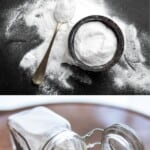
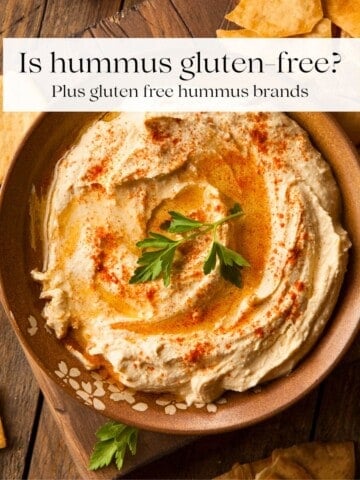
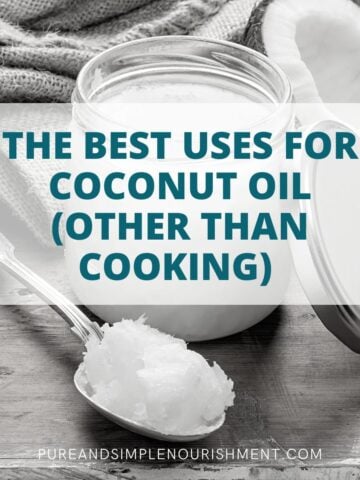
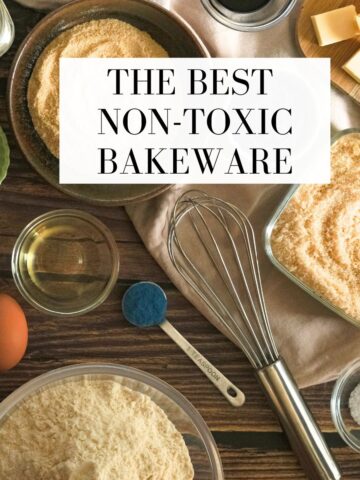

Leave a Reply